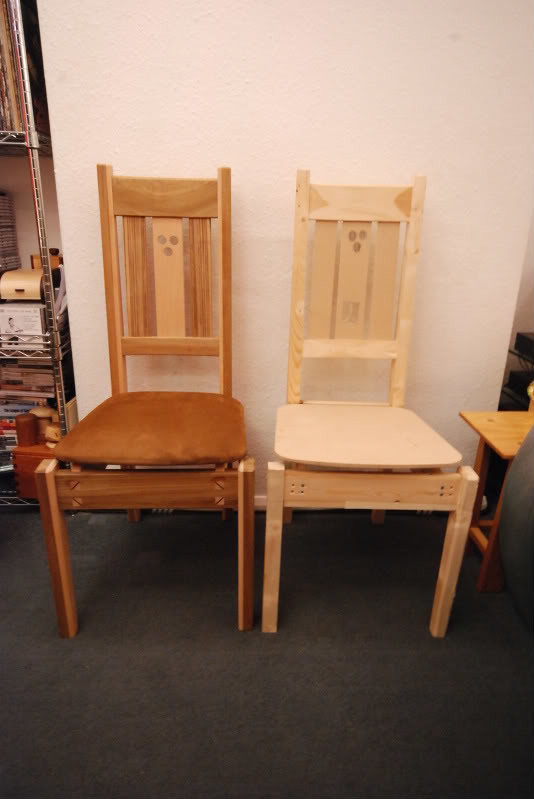Oscar makes a good point, safety when router copying needs some thought.
-You need to make sure the router bit is properly guarded. You'll see plenty of YouTube videos where there's no guarding at all, but in commercial workshops it's a must. I confess that in my own workshop it's very tempting to ignore guarding under some circumstances, but I've worked in enough commercial workshops to know that's just laziness and lack of imagination, with a bit of effort there's always a way. You need to set up the router so the minimum amount of cutter is above the table and the router bits with bearings both above and below the cutter probably have some inbuilt extra safety.
-The workpiece needs to be securely fastened to the template. Commercial workshops prefer screws or toggle cramps and frown on double stick tape because it opens the door to operator variability and error. In your own workshop double stick tape is commonly used, but if you're going to use it then err on the side of safety; good quality tape, dust free, too much rather than than too little, and well pressed down.
-The real problem is end grain cutting, that's when the router is most likely to snatch. You need to design your templates so there's both a lead-in and a lead-out for the cut. I'll always band saw to within a mill, but on end grain I'll band saw to within half a mill and absolutely ensure there's no bumps that the cutter can grab onto. Make sure you're feeding in the correct direction and always try a test pass first with the router switched off so you can be sure the manoeuvre can be completed in one movement and you know when and where you'll perform any change of grip.
This is a piece of furniture I make fairly regularly,
And this is the router copy template I use for the 32mm legs,
If I were making this in a shared workshop I'd break it down into two or more sub jigs in order to get a better lead-in and to avoid the need for double stick in the centre where I can't fit a toggle cramp. If you're not confident in your arrangement then don't route, instead use a bandsaw/fret saw and finish with a spokeshave. After all, that's how you make the templates in the first place, and the copy routed job will never be better than the finish you achieve on the template!












































